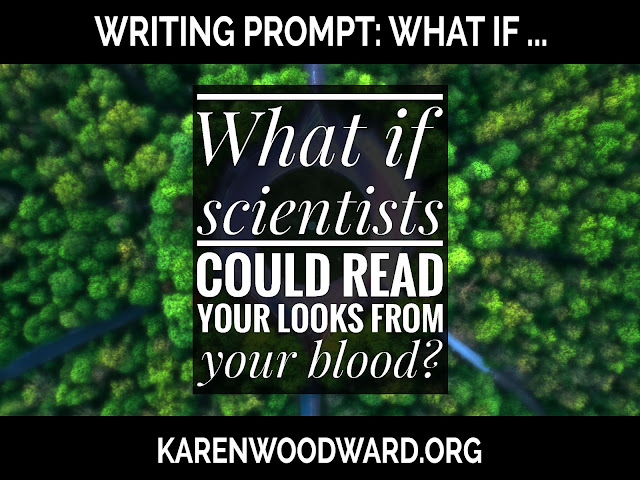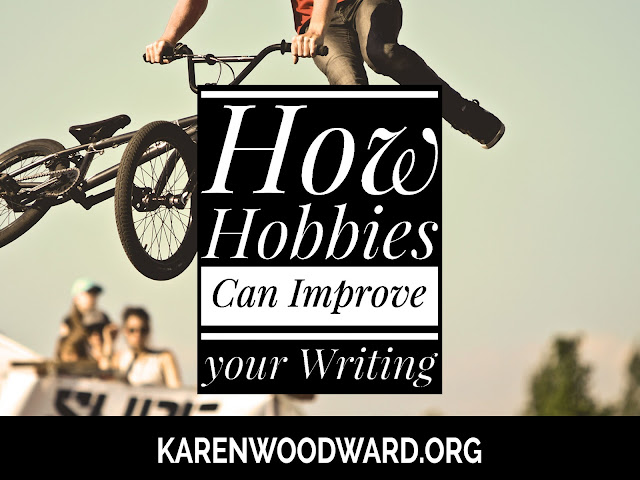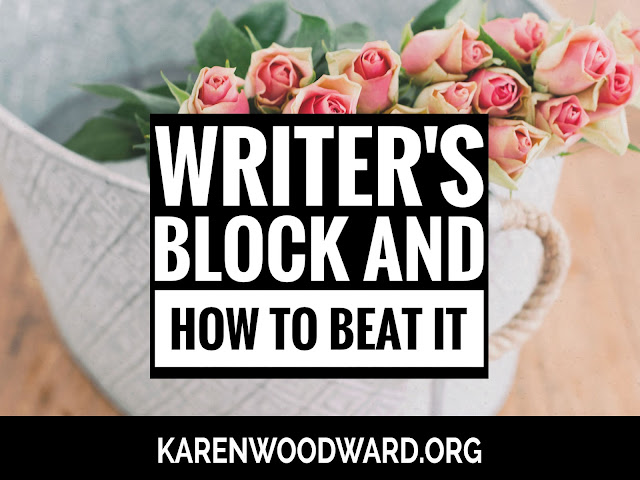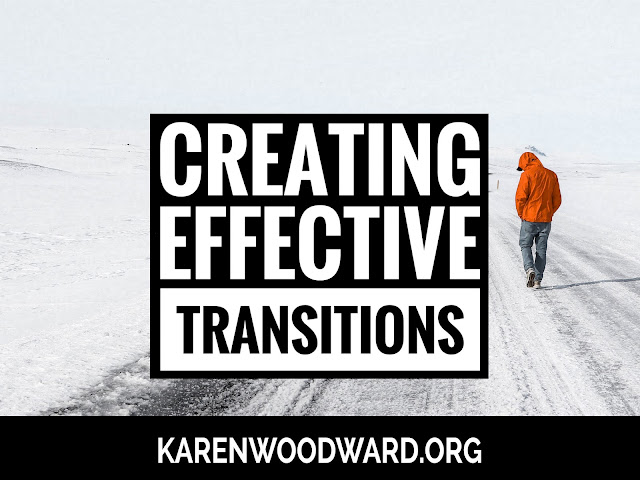This article is part three of How to Write a Book (
Part One,
Part Two). Today I take the theory I laid out in my previous two posts (especially
the last) and create an outline.
5a. Murder in Meadowmead: Example Outline
Murder in Meadowmead is a story I’ve been writing through
a series of blog posts. Why? To give others—especially beginning writers who have never written a book—an idea of ONE WAY this can be done.
If you look at what I’ve created, below, and realize you do things differently, that’s fine! Do whatever works for you. But if you’ve never written a book and wonder how someone else does things, read on. When I was younger I didn’t have anyone’s shoulder to peek over. In those days I wanted to learn how someone took ideas (and goals and hopes and fears) and spun them into a tale.
I’m not saying what follows is the ‘right’ way (there’s no one right way!) to write a story and it’s certainly NOT the only way. But if this helps you, awesome!
By the way, this post continues a series I began on
How to Write a Murderously Good Mystery: The Major Characters.
a1. ACT ONE (25%)
a1.1. The Ordinary World
The ordinary world represents the detective’s—Alex’s—life before the adventure (for more on Alex see
Let's Make a Detective!). This is his starting point (for more on story structure see:
The Structure of a Great Story). The setting should be designed to show readers who he is (the paintings he's chosen to display on the wall, his liquor cabinet, whether he keeps a journal, whether he displays pictures of family and friends, etc.
Further, something about Alex—his mannerisms, his behavior or how he looks—should be exaggerated; memorable.
Perhaps I’ll start the story by having Alex pack his belongings in preparation for his move to Meadowmead. He needs opposition, so perhaps Alex has a friend who thinks he’s nuts for moving. Or ... no. Not a friend; Alex doesn’t have close attachments. It’s his lawyer; he’s there to either pick something up or drop something off.
“Why are you moving there? And don't talk to me about that awful restaurant your mother-in-law left you. Where the hell IS Meadowmead, I’ve never heard of it! I’m sure they roll up the sidewalks at 9 pm. No restaurants, no entertainment, what the hell are you going to do? Stay home and READ?!” Robert said.
It’s a good question. WHY would Alex move from a gorgeous apartment in Manhattan, one overlooking Central Park, to a sleepy town hardly anyone has heard of? Why THAT town as opposed to another? Is Alex looking for something? If so, what? What is drawing him?
Or is Alex running away from something? Perhaps memories of his late wife? (He and his late wife lived in his Manhattan apartment. They moved in after their honeymoon. They lived there for one glorious year before she died—I’m not 100% sure how she died, but I’m pretty sure her death was thought to be an accident.)
I think I’ll incorporate flashbacks. Alex is walking around his apartment looking at pictures of himself and his late wife in happier times. In one they’re holding hands, screaming at the top of their lungs as they bungie jump off a cliff; it was their honeymoon and Alex had never been that scared in his life. As he looks at the picture he smiles and turns away from Robert to wipe a tear from his eye.
“I’ll have everything packed up and sent on,” Robert said.
Alex shook his head. “No. Just pack it up and store it.”
“Everything? You don’t want anything sent on? Not even your clothes?”
Alex shakes his head and leaves.
a1.1 Revision Notes:
Robert needs a goal, something he wants in the scene. As it is, there’s no friction. What is Alex giving up by moving? What is he gaining?
I think I’ll make Robert an older man, a friend of Alex’s parents. He wants Alex to take charge of the family business. He sees Alex’s move to Meadowmead as him running away, as cowardice. Alex needs to have a definite, concrete, goal in moving to Meadowmead. He may not share this with Robert, but he should allude to it.
a1.2. Inciting Incident: What is the Inciting Incident?
The Inciting Incident is where the world of the story changes. It is BECAUSE of the Inciting Incident that the protagonist receives a Call to Adventure (if these terms are unfamiliar, see my post
A Story Structure in Three Acts).
I think I’ll make the Inciting Incident MYSTERIOUS. At twilight a strange older man rushes down the sidewalk and staggers into Alex. Apologies are exchanged.
“I have to go,” the other says, breathless, his watery fish-like eyes darting everywhere at once.
“Is someone chasing you?” Alex asks, glancing around. The street is empty.
The two exchange a look, a glance. Alex thinks,
This man is terrified.
There’s something familiar about this apparent stranger, Alex feels he’s seen him before, perhaps a long while ago. “Do we know each other?” Alex asks, frowning. The man tears himself away and rushes on.
Shaken, Alex puts his hands in his pockets. Nestled in his right hand pocket is a small package. Some instinct keeps him from reacting. Alex finishes his shopping and walks home, careful not to betray any excitement. Only when he is safely in his apartment away from prying eyes does he reach into his pocket, take out the package and examine it. (I don’t yet know what’s inside, but it should be something that shatters the detective’s old world. Perhaps he learns something about his wife or her family.)
a1.2. Revision Notes:
This scene needs to go first! THIS (the package and the events surrounding Alex acquiring it) is the Inciting Incident and it’s how I’ll open the book. This is why Alex decides to move to Meadowmead. (I discover, later in this post, that the package contained information about his wife’s death, information that convinces Alex that her passing wasn’t an accident.)
a1.3. Call to Adventure: What draws the protagonist into the quest?
The Inciting Incident changed the world; it has shattered the protagonist’s status quo. The Call to Adventure is the protagonist reacting to that change.
There are two arcs, two storylines, that intimately concern the protagonist: the INNER ARC and the OUTER/EXTERNAL ARC. The external arc is the murder mystery. The internal arc is about Alex facing his demons and trying to track down and punish those responsible for his wife’s death. Each of these has an Inciting Incident.
a1.3. External Arc
Alex’s late wife’s brother, Ben, comes to Alex and asks him to figure out who murdered his friend. Sure, he has an ulterior motive, but this is the reason he gives (I go over the sidekick in the post
Let’s Create a Sidekick!). Alex initially refuses because he never was close to Maria’s brother—the man had never liked him, never thought he was good enough for his sister—also it really doesn’t look like there’s a case.
NOTE: The External Arc doesn't begin until Act Two, I mention it here only because we're talking about the Call to Adventure.
a1.3. Internal Arc
Alex wants revenge for his wife’s death. He is sure there’s something in the town that can help him figure out who killed his wife.
NOTE ABOUT THE PACKAGE: This is what was in the package! Evidence that his wife’s death wasn’t an accident, evidence she was killed and that the answer to who killed her can be found in Meadowmead. I think the package contained a USB flash drive.
A waiter/manager at his restaurant, someone who has been there for ages will act as Alex’s mentor. Perhaps she knows tarot. She gets Alex to reconsider by giving him information that connects his late wife’s family up to whatever the package was, whatever drew Alex to Meadowmead. Also, this woman talks to him about his wife, what she was like as a child. She talks about his wife’s mother, her family. Perhaps she also gives him something of Martha’s or Martha’s mothers. Perhaps he also has a dream that night. In any case, he changes his mind and begins to investigate with the brother.
a1.4. Journey to the Special World: What mini-quest takes the protagonist from the Ordinary World into the Special World of the Adventure?
Often the Special World is in a different physical location. For instance, in Star Wars Luke left his home planet of Tatooine and headed off to join the Rebel Alliance. In my example story the Special World is the small, sleepy, town of Meadowmead, especially those parts of the town associated with Alex's late wife’s family.
a1.4. Internal Arc
The quest that takes Alex from the Ordinary World (Manhattan) to the Special World (Meadowmead) of the Adventure will have to do with the mysterious package. Alex will need to risk something and he will need to get something.
Perhaps, after Alex unwraps the package, he will set up a meeting with the messenger who gave him the package. The messenger is either killed while they’re meeting or just before and Alex finds his body. Perhaps there’s something on the body that provides Alex a clue. Perhaps the older man has the same tattoo as his wife, or a similar medallion.
Also, there should be a point of no return either here or at the midpoint. Alex should have to make a conscious decision to continue with his quest despite the cost, the stakes (and the cost/stakes must be spelled out before he makes his decision).
a2. ACT TWO (26 to 75%)
Show the protagonist discovering the Special World of the Adventure. There should be tests and trials as well as fun and games. The Special World is starkly different from the Ordinary World—
inside out and upside down.
a2.1. External Arc
Because of what Alex learns about the package, because of his experience finding the messenger dead, because of his conversation with the manager over at Absinthe Cafe, Alex decides to help Ben (his late wife’s brother) investigate the death of his friend. At this point Alex accepts the Call to Adventure.
Perhaps Ben is a detective on the force. He tells Alex that his investigation isn’t going anywhere and he wants a fresh pair of eyes. His sister always said she had never met anyone as smart as Alex, that if Ben ever had a crime he couldn’t solve he should get Alex to help. Ben is trying to butter up Alex but it kinda works.
a2.1. Internal Arc
Alex remembers his wife in a certain way. She was intelligent with a quick smile and a kind heart. She was an open book, brimming with passion for life. As Alex explores the town, talks to people who knew Maria, he forms a very different image of his late wife. The people of the town know Maria as someone brilliant but sad, withdrawn and even a wee bit scary. One thing they all agree on is that she was very determined. Once she decided to do something nothing could stop her.
a2.2. Trials: What challenges does the protagonist have adjusting to the Special World?
a2.2. External Arc
Alex needs to interview those who saw the victim last, discover what their alibi’s are, what their potential motive would be, and so on. If Ben is attached to the police in some way this could be useful, otherwise Alex will have to get creative.
Obviously the number of suspects you have is completely up to you. I’m going with 4 and here’s why. One of the suspects will be killed at roughly the 2/3 point leaving 3, which is fine. That’s still enough choice to make things suspenseful. The fewer suspects I have the less planning I’ll have to do. It’s that old adage: KISS (Keep It Simple, Silly).
As part of the trials the detective will go to each of the suspects and try to suss out whether they have means, method and opportunity. Also, the detective will likely have to consult at least one expert to help interpret the evidence or confirm a theory.
a2.2 Internal Arc
Alex has trouble finding out about his late wife. Alex has trouble getting folks to talk to him, even about the weather! Those few who do talk refuse to give him any information about Maria or her family. Alex has to employ a variety of techniques to get information (bribing people with food, free meals, doing favors, perhaps even a little blackmail).
He starts off by hiring someone to investigate the elderly man who gave him the package (see the Inciting Incident). That leads to other sources of information, other people to question. One person he wants to speak with is his father-in-law; Alex suspects this man is linked to his wife’s death, but he’s not sure how. Or perhaps Alex THINKS he knows how he just wants to hear him admit it.
a2.3. Approach the cave: What crisis compels the protagonist to confront the antagonist at the midpoint?
a2.3. External Arc & Internal Arc
Something that Alex came across, some evidence/information, has shed light on his wife’s death. It has given Alex a link between his wife’s so-called accident and her family.
a2.4. Midpoint: What happens at the confrontation? Does the protagonist win or lose? Do they acquire any information?
a2.4. External and Internal Arc
At the midpoint the protagonist finds out something, some information, that is critical to the case. I think that perhaps this is when Alex finds out the central role Maria’s father plays in the cabal.
Alex confronts Maria’s father, a man who has never liked him. Alex believes the father is behind his wife’s death. Maria’s father says that IF anyone was the cause of her death then that person was Alex. Maria left the family because of Alex and NO ONE leaves the family. She had been warned.
Something that the father says triggers a memory, something about the murder Alex is investigating, but he can’t pin it down. It’s like having something on the tip of your tongue ...
a2.5. Bonding
After the midpoint there’s usually a time of bonding. The protagonist gets together with his allies (so far that’s only Alex, Ben and maybe his manager at Absinthe Cafe) and discusses what happened at the midpoint.
In any case, they have dinner at Alex’s restaurant and discuss the case. They probably interact with a few other characters from the town.
a2.6. The First Plan
As part of bonding, a plan is cooked up. You could make this part a bit humorous. Have it that the group thinks a character, call him Hank, is the murderer. They’re all set to bring him in. They go to Hank’s office and then ... find him dead.
a2.6. Complication: Something goes very wrong and complicates the protagonist’s quest, what happens?
Hank’s death is the first complication.
a2.6. More complications: Events keep going wrong. What happens?
Alex is arrested for the second murder. He’s been framed. As soon as Alex arrived at the location of the second murder police, etc., arrive. There is no REAL evidence of Alex’s guilt, the cabal has no real evidence, they are just trying to intimidate him.
Ben posts bail.
a2.7. All Hope is Lost: What happens at the All Hope is Lost point?
The cabal makes it look like Alex has violated his bail, either that or they trick him into doing something that violates his bail. He’s thrown back into jail. Perhaps someone comes to try and kill him but Alex defends himself.
It looks as though the cabal has won and Alex is finished. No matter what he does, the cabal will be one step ahead. If they want him to rot in jail, then Alex will rot in jail. If they want to frame him for murder then he’ll go down for murder.
a3. ACT THREE (76 to 100%)
In general terms, here’s what’s happening in the third act:
All subplots have been closed out or will soon be closed out. The detective knows the identity of the murderer and events are pushing the protagonist toward the big reveal.
The way I’m thinking about it (and keep in mind this is early days) The internal and external arcs don’t exactly merge, but Alex now knows what he’s got to do on both counts.
a3.1. Race to the Finish: How does the protagonist get her mojo back and get back on track?
At the beginning of the third act Alex thinks the cabal killed the second victim. (We know this is incorrect, it was Lydia Morton.)
Something happens that gives Alex the epiphany he needs to solve the case. (The thing that was niggling at him when he confronted his late wife’s father at the midpoint is now made clear.) He realizes his anger, his hate, for the cabal has been blinding him. The cabal didn’t have anything to do with the second victim. As soon as he realizes that, he realizes who killed both victims.
Although Alex now knows the identity of the murderer he doesn’t have enough evidence to prove his suspicion.
a3.2. The Second Plan
Alex realizes that the cabal either has the proof he needs for his theory or is suppressing it. Further, the cabal is working against him (mostly) because
a) The murderer, Lydia, is a member of one of the founding families and they protect their own.
b) The cabal doesn’t like Alex. The cabal doesn’t seriously think Alex will be able to hurt them in any significant way, but accept that he could make things more difficult for them.
Alex’s plan is to get leverage on the cabal so that, at the very least, they’ll stop blocking his attempts to get the evidence he needs to bring the murderer to justice. Let’s say there is something specific, some object—perhaps a piece of paper or a section of surveillance video—Alex needs to get his hands on. He tries to hire someone (perhaps he knew people in Manhattan) but they all refuse once they realize the target is the cabal.
a3.3. First Complication
Note: There doesn’t HAVE to be three complications, though that is a good number because two are generally similar (though the stakes are raised each time) while the third is different and much more dire.
Alex tries to get what he needs from the cabal and fails.
I think this story needs a strong antagonist other than the cabal and the murderer. Perhaps the police chief or the mayor? Someone with power, someone who could really hurt the detective. Let’s say we’ve got someone like this in the story. They foil the detective’s attempt to get what he needs AND, on top of this, he lands back in jail. (Or perhaps now he’s thrown into one of the cabal’s private jails.)
a3.4. Second Complication
I think Alex needs a mysterious benefactor, a kind of mentor character. We might not find out who this person is in the first book.
Did Alex get what he needed from the cabal? No BUT Alex’s benefactor intervenes and he’s released. This was a one-time-only intervention. (In order for this not to be an instance of
deus ex machina I’ll have to retroactively insert this character into the story, starting at the beginning. Perhaps this person helped Alex figure out what was in the package he received at the beginning of the story, the thing that became the Inciting Incident.)
Alex’s benefactor helps him get out of jail BUT this raises the stakes for Alex. Perhaps his sidekick—Ben—is assaulted or kidnapped or in some way put in danger. Further, Ben was in the process of getting critical evidence.
a3.5. Third Complication
Alex goes to the cabal to either blackmail them or offer them something they can’t refuse. Perhaps Alex says he’ll withdraw from everything, he’ll leave town, if they return Ben unharmed.
The cabal is shielding the murderer, Lydia, because of her family connections (perhaps they’re also scared of what she could tell Alex about their organization). The cabal catch Alex off-guard. They aren’t easily manipulated. Alex’s late wife’s father makes Alex a surprising offer. In exchange for giving Alex what he needs to solve the murder he’ll owe his father-in-law a favor.
a3.6. Climax: What happens at the climax? Does the protagonist win and, if so, how?
Since this is a murder mystery it’s no surprise what happens at the climax! This is the Big Reveal.
Since this post is quite long enough I think I’ll save the various kinds of reveals for later!
a3.7. Wrap up: What happens to the major characters?
I'm not going to worry about this until the rest of my outline is more developed.
General Observations
I find it fascinating how a story comes together. I started off with no idea about a mysterious package, the idea just came to me. Then I realized the package contained evidence that Alex’s wife didn’t die a natural death, that she was helped off this mortal coil. That information combined with hints about Meadowmead was enough to get Alex to move to a small town he never knew existed a week ago.
I suspect I’ll talk more about this in subsequent posts, but notice that when I started off the story I had NO IDEA how it would start. I’ve talked to other writers and that’s normal! So don’t stress about the first few paragraphs of your story, about that first scene, until AFTER you have a solid first draft (not a Zero Draft, a first draft). Sketch out the bare bones of your story and then flesh things out as you go.
SIDEKICK. One thing I need to develop further is Ben’s role in the story. Rather than doing that now, I’m going to publish this post and fill in the gaps later.
Every post I pick something I believe in and recommend it. This serves two purposes. I want to share what I like with you, and, if you click the link and buy anything over at Amazon within the next 24 hours, they put a few cents in my tip jar at no cost to you. So, if you click the link, thank you! If not, that’s okay too. I’m thrilled and honored you’ve visited my blog and read my post.
I've been to Michael Hauge's workshops and he is AMAZING! He just came out with a new book: Storytelling Made Easy: Persuade and Transform Your Audiences, Buyers, and Clients — Simply, Quickly, and Profitably. I haven't read it yet (I just found out about it 5 minutes ago!) but it's at the top of my 'to read' list.
From the blurb:
Renowned Hollywood story expert Michael Hauge’s Six Step Success Story formula gives your potential clients and buyers the emotional experience of success—and will move them to take action.











